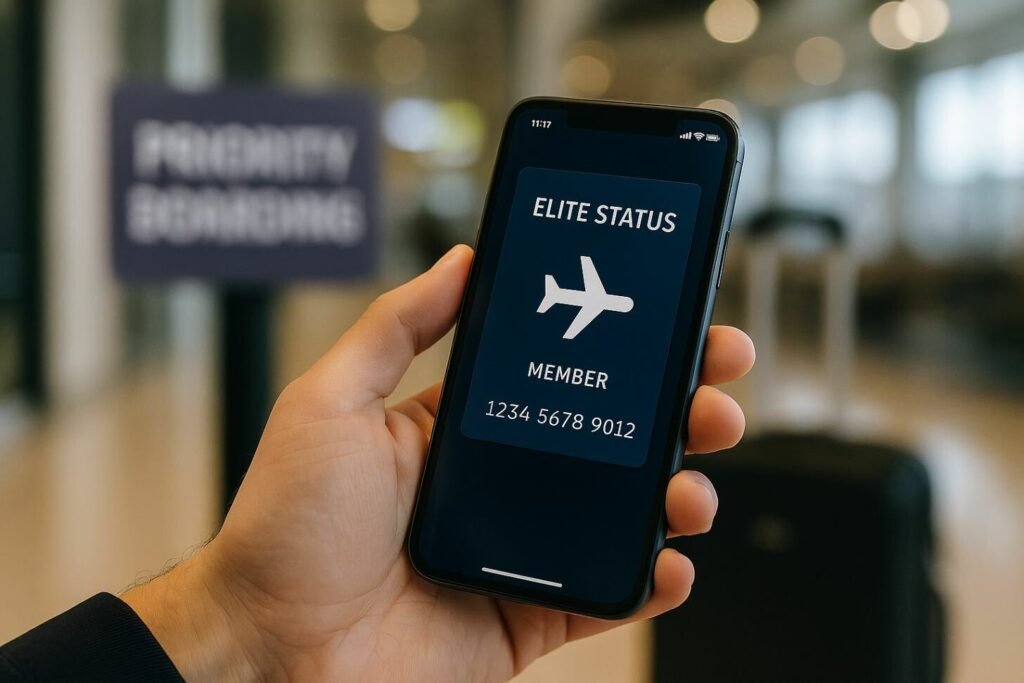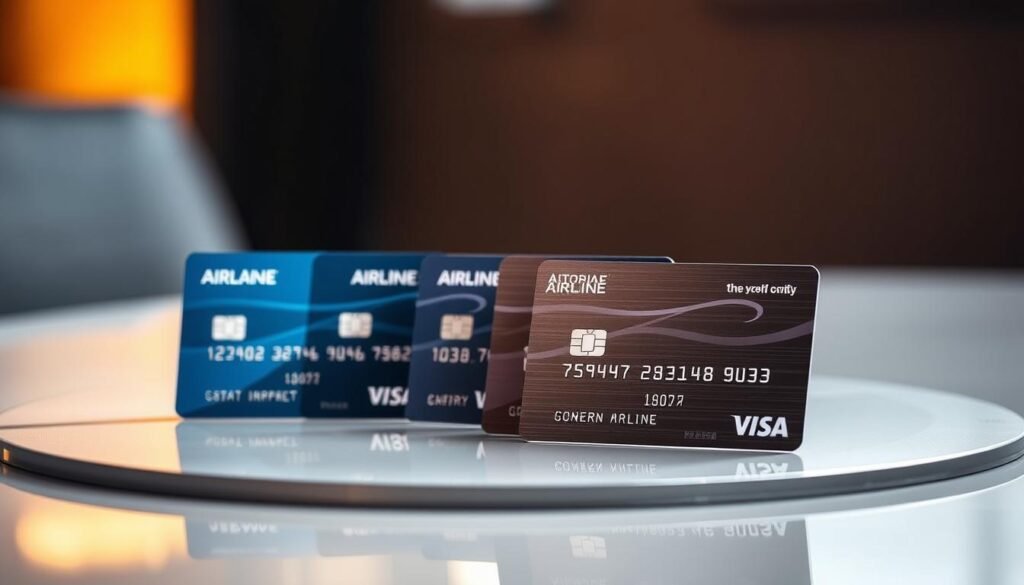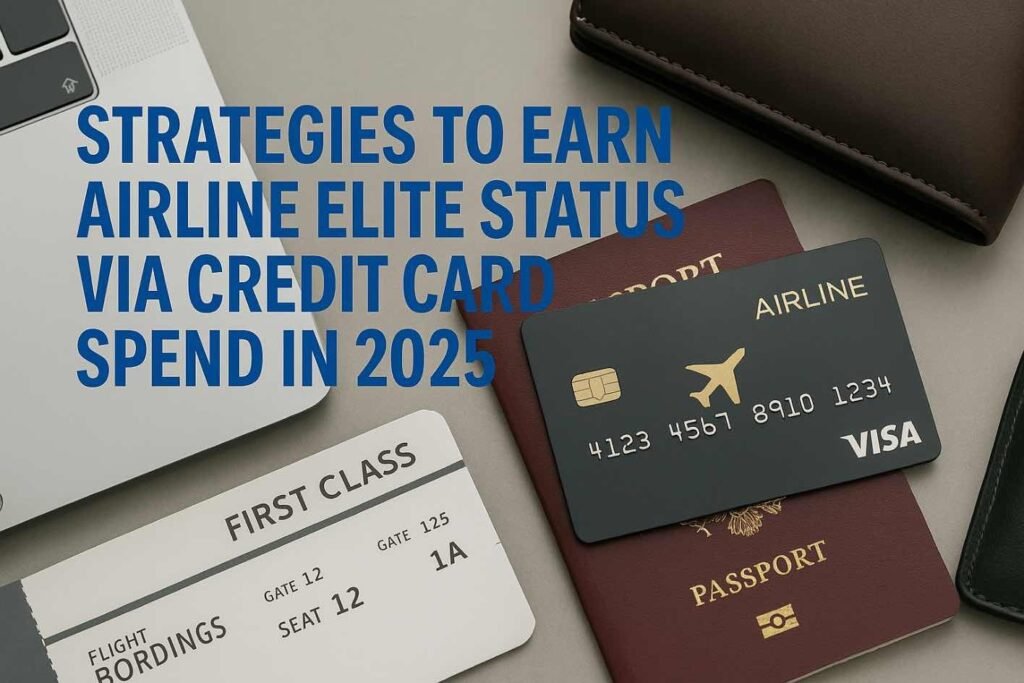Affiliate Disclosure: Travel with Plastic may earn a commission or referral bonus from some links on this site. These affiliate links help support our work and may influence the placement or promotion of certain products or services. However, our content is independently crafted to reflect honest opinions. Not all offers or products are included. There is no additional cost to users when they utilize our affiliate links.
We’ve all watched fellow travelers glide through priority lanes while we shuffle in standard queues. That moment when a gate agent announces “complimentary upgrades for our elite members” hits differently when you’re clutching a basic boarding pass. What if we told you those coveted privileges aren’t reserved for road warriors?
Modern loyalty programs now recognize financial commitment as equally valuable as flight frequency. Major carriers reported a 37% increase in status achievers through spending pathways last year. This shift means your everyday purchases could secure lounge access, free checked bags, and seat upgrades – no flight marathon required.
Our team analyzed 12 co-branded cards to create this roadmap. We’ll show how strategic spending aligns with program requirements, turning grocery bills into first-class experiences. Whether you’re saving for a dream vacation or seeking smoother business trips, this approach makes elite-tier rewards surprisingly accessible.
Key Takeaways
- Co-branded cards accelerate status achievement through bonus loyalty points
- Targeted spending often outweighs flight requirements for modern status tiers
- Premium benefits include seat upgrades and baggage fee waivers
- Program-specific thresholds determine qualification paths
- Our guide simplifies complex reward structures into actionable steps
- Regular purchases can build status faster than occasional luxury trips
Understanding Airline Elite Status and Credit Card Rewards
The secret to premium travel perks might be in your wallet, not your boarding pass. Membership tiers unlock game-changing advantages – from skipping security lines to complimentary premium seats. Let’s explore how modern loyalty systems reward financial engagement as much as flight frequency.

Why Status Matters Beyond the Cabin
Top-tier travelers enjoy priority check-in, waived baggage fees, and system-wide upgrades. American Airlines’ Executive Platinum members, for instance, receive confirmed domestic upgrades 72 hours before departure. Delta’s Diamond Medallions get annual “Choice Benefits” like lounge access or bonus miles.
Accelerating Status Through Purchases
Co-branded cards transform routine spending into qualification progress. American’s Loyalty Points system counts every $1 on their card as 1 point toward status – hitting 200,000 points earns top-tier perks. Delta’s Medallion Qualification Dollars (MQDs) now include 20% of card spend toward annual thresholds.
One key difference? United’s Quest Card offers 500 Premier Qualifying Points per $12,000 spent. This hybrid approach helps casual flyers reach Silver status through strategic purchases. As programs evolve, understanding these mechanics becomes essential for maximizing value.
Key Credit Cards to Achieve Airline Elite Status
Imagine turning everyday purchases into first-class privileges without stepping on a plane. The right co-branded options convert routine expenses into accelerated qualification paths. We’ve decoded the best options to fast-track your journey to premium travel perks.

Top Carrier-Specific Options
American Airlines’ Citi® / AAdvantage® Executive World Elite Mastercard® delivers 1 Loyalty Point per dollar spent. Hit $150,000 annually, and you’ll unlock Executive Platinum status. Delta’s SkyMiles® Reserve Card automatically includes Medallion Qualification Dollar boosts – spend $30,000, get $3,000 MQD credit.
United’s Quest Card offers 500 Premier Qualifying Points for every $12,000 spent annually. Southwest Rapid Rewards® Priority converts points into Companion Pass qualifications. JetBlue’s Card bumps Mosaic status seekers with 6x points on eligible purchases.
Reward Structures Decoded
Annual fees range from $95 to $595, but premium cards often offset costs with travel credits. The Delta Reserve provides $240 Resy Credit and $120 RideShare rebates yearly. American’s flagship card includes $120 in loyalty point accelerators.
Bonus categories matter: United’s 2x on dining/direct bookings complements their PQP system. Southwest’s 3x on rapid rewards purchases stacks with their Companion Pass threshold. We recommend matching your largest spending categories to each program’s multipliers.
Strategies for Earning Airline Elite Status Through Credit Card Spend in 2025
What if grocery runs and gas fill-ups could unlock airport lounge access? Modern loyalty programs now reward consistent financial engagement as much as frequent flying. We’ve discovered three game-changing approaches to transform routine transactions into elevated travel experiences.
Smart Card Management Tactics
Timing matters. Many programs offer double qualification points during promotional periods. A Delta cardholder spending $15,000 in Q4 could earn 3,000 Medallion Qualification Dollars instead of 1,500. Always check your program’s calendar for these accelerators.
Maximize everyday expenses:
- Use co-branded cards for recurring bills
- Stack shopping portal bonuses with card multipliers
- Schedule large purchases during bonus windows
Syncing Ground and Air Efforts
Combine mileage runs with strategic purchases. A United flyer might book a short-haul flight during a 2x PQP promotion while putting hotel charges on their Quest Card. This dual approach helped one traveler earn Silver status with just 8 flights last year.
Remember: Most programs now let you backdate activity within the same calendar year. If you’re close to a status threshold in November, a well-timed appliance purchase could push you over the edge. We recommend tracking progress monthly through loyalty program dashboards.
Detailed Breakdown of Airline and Hotel Loyalty Programs
Mastering loyalty systems turns routine expenses into premium travel experiences. We’ll decode how major programs convert spending into perks, helping you choose the best path for your lifestyle.
American Airlines AAdvantage and Loyalty Points
American Airlines simplifies status with their Loyalty Points system. Every $1 spent on their co-branded card equals 1 point. Hit 75,000 points for Gold status, 175,000 for Platinum Pro. Executive Platinum requires 250,000 points annually.
Their Citi® card offers accelerated earnings: 2x points at gas stations and restaurants. We’ve seen travelers earn elite status faster by timing large purchases with seasonal bonuses.
Delta, United, and Other Major Programs
Delta’s Medallion Qualification Dollars (MQDs) now include 20% of card spending. A $100,000 annual spend delivers $20,000 MQDs – enough for Diamond Medallion when combined with flights.
United’s Premier Qualifying Points (PQPs) work differently. Their Quest Card grants 500 PQPs per $12,000 spent. Combine this with flight activity to unlock Silver status at 7,000 PQPs.
Hotel Loyalty Programs: Hilton, Marriott, and Hyatt
Hotel systems reward consistent stays and credit card use. Hilton Honors gives 1 elite night credit per $1,000 spent on their Aspire Card. Marriott Bonvoy’s Brilliant® Card offers 25 annual elite night credits – halfway to Platinum status.
Hyatt’s World of Hyatt Card provides 5 elite night credits yearly. Combine hotel and airline elite status for maximum value: Priority Pass lounge access often stacks with both program benefits.
Maximizing Credit Card Rewards and Loyalty Points
Your morning coffee run could become the key to airport lounge access. We’ve uncovered practical methods to convert routine purchases into accelerated progress toward premium travel benefits.
Earning Points Through Regular Spending and Shopping Portals
Start with your existing habits. Grocery bills and utility payments earn 2x points through American’s AAdvantage portal. Delta cardholders also earn bonus miles when booking hotels via SkyMiles Shopping.
Three power moves we recommend:
- Link cards to portals like SimplyMiles for 10x points at partner retailers
- Stack holiday sales with portal bonuses (e.g., 5,000 bonus points on $200 purchases)
- Use co-branded cards for dining – most programs offer 3x points
The Impact of Bonus Categories and Extra Offers
Bonus multipliers work differently than base points. United’s 4x on gas stations counts toward Premier status twice as fast as regular spending. American’s limited-time promotions sometimes offer quadruple loyalty point earnings.
Last quarter, a client earned Gold status by:
- Maxing out 5x grocery bonuses
- Completing portal shopping challenges
- Timing insurance payments with 2x point offers
Monitor your program’s “Offers” tab monthly. These hidden gems help you get elite benefits faster through targeted spending. Remember – every $1 spent strategically brings you closer to priority boarding and complimentary upgrades.
Tips for Optimizing Spending to Meet Qualification Metrics
Smart travelers know status isn’t just about boarding passes—it’s about playing the points game right. Qualification systems like Medallion Qualification Dollars (MQDs) and Premier Qualifying Points (PQPs) act as gatekeepers to premium perks. Let’s break down how to align your financial habits with these metrics.
Cracking the Code: MQDs vs. PQPs
Delta’s MQD system converts 20% of card spending into status progress. Spend $50,000 annually? That’s $10,000 toward Silver Medallion’s $15,000 threshold. United’s PQP approach rewards big-ticket purchases—every $12,000 on their Quest Card delivers 500 PQPs.
| Program | Spend Requirement | Miles Earned | Bonus Opportunity |
|---|---|---|---|
| Delta Medallion | $30k = $6k MQD | 60,000 | Companion Certificate |
| United Premier | $12k = 500 PQP | 24,000 | PlusPoints upgrades |
| American Loyalty | $1 = 1 point | 75k = Gold | System-wide upgrades |
Calendar Hacks for Status Seekers
Most programs let you backdate qualifying activity through December 31. One traveler maximized this by:
- Scheduling dental work during a 2x bonus period
- Pre-paying insurance premiums in Q4
- Using shopping portals for holiday gifts
“Timing my holiday shopping spree in December pushed my MQDs over the threshold,” shares a Delta Platinum member.
Budgeting for Mileage Milestones
Divide your annual goal into monthly targets. If aiming for Delta’s Gold ($15k MQD), plan $1,250 monthly across bonus categories. Set calendar reminders for:
- Quarterly bonus promotions
- Statement closing dates
- Mileage run fare sales
Comparative Overview: Airline Status vs. Hotel Loyalty Programs
Travelers often face a choice: invest in sky-high privileges or ground-based rewards. While both systems offer elite perks, their paths to platinum-level benefits diverge sharply. Let’s examine how these programs measure commitment and reward loyalty.
Differences in Qualification Metrics and Benefits
Airlines prioritize movement. Delta requires $15,000 in Medallion Qualification Dollars or 140,000 flight miles for Platinum status. Hotels value consistency – Marriott’s Platinum Elite demands 75 nights or $120,000 in card spending. One rewards frequent takeoffs, the other regular check-ins.
Consider these contrasts:
| Program Type | Key Metric | Platinum Perks | Annual Fees |
|---|---|---|---|
| Airline | Miles flown | Complimentary upgrades | $250-$695 |
| Hotel | Nights stayed | Suite upgrades | $95-$650 |
Flight-based programs often waive baggage fees – American’s Platinum members save $35 per checked bag. Hotel elites enjoy late checkouts and breakfast credits. A United flyer might achieve status through 54 flights, while a Hilton loyalist needs 60 nights.
Your lifestyle dictates the better fit. Road warriors gain more from airline programs with priority boarding and lounge access. Urban explorers benefit from hotel rewards with room upgrades and dining credits. We recommend focusing on where you spend most nights – whether at 30,000 feet or in premium bedding.
Conclusion
Elevating your travel experience no longer demands endless flights. We’ve shown how aligning spending habits with program mechanics unlocks lounge access, seat upgrades, and baggage benefits. Whether chasing Delta’s MQDs or United’s PQPs, every dollar spent strategically accelerates your progress.
Key differences matter. American’s Loyalty Points value consistency, while Delta’s system rewards big spending spikes. Hotel partners like Marriott complement these efforts – their elite night credits stack with airline status for comprehensive rewards.
Remember three essentials: Monitor program terms for seasonal bonuses, leverage shopping portals for multiplier effects, and time large purchases with qualification deadlines. One client reached Gold status by prepaying taxes during a 3x points promotion.
We stand by our mission: empowering you to transform routine expenses into premium experiences. With the right financial roadmap, those priority boarding announcements will soon include your name – no flight marathon required.

